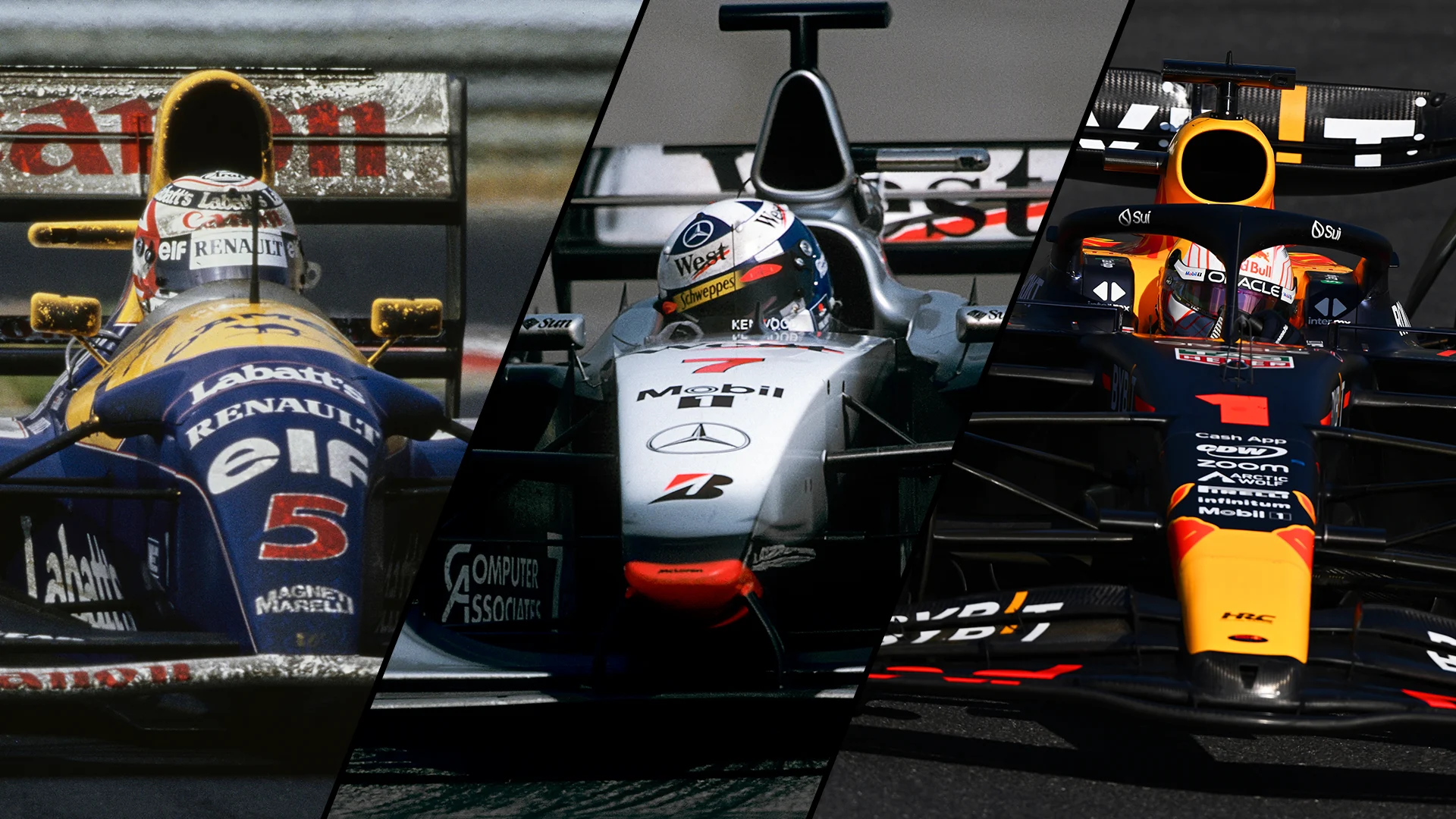Adrian Newey’s design genius has defined modern Formula 1. And it continues to do so as, 31 years after his first success, Red Bull have secured the 12th constructors’ championship for one of his cars.
In modern F1, a car has many designers but there’s no question that Newey’s guiding hand as Chief Technical Officer at Red Bull is a key contributor to their success. The Red Bull RB19 has won 15 out of 16 Grands Prix so far, making it one of the most dominant F1 cars in history.
The dozen Newey cars that have won the constructors’ title with Williams, McLaren and Red Bull represent a technical history of modern F1 and reveal glimpses of the genius of a mind that has shaped 21st century Grand Prix cars more than any other.
1992 Williams-Renault FW14B
Newey’s first title-winning car was crushingly dominant, setting the fastest individual lap on every Grand Prix weekend in 1992 and winning 10 out of 16 races.
As Chief Designer, working with legendary Williams Technical Director Patrick Head, Newey was responsible for the aerodynamics, and the Williams FW14 of 1991 was the natural evolution of the direction Newey pioneered with the March 881 of 1988.
The FW14B, adapted to incorporate active suspension, was originally an interim car, but it was so good that Williams stuck with it. Active suspension, whereby hydraulically-operated actuators could adjust the height of each corner of the car, not only allowed greater optimisation of the aerodynamic design – given the ability to control the ride – but also allowed a drag reduction trick whereby at the push of a button on the straights the rear was lowered and stalled the diffuser.
Powered by the potent Renault V10 and with a semi-automatic gearbox designed by Head, this was a car well ahead of its time.
1993 Williams-Renault FW15C
The Williams FW15 was originally slated to make its debut in May ’92, but benefitted from a lengthened gestation. Effectively, the Williams FW15C that raced in 1993 was an evolution of the FW14B, optimised around the active suspension system with improved mechanical packaging, reduced weight, more aggressive aerodynamics, power steering and, as of the French Grand Prix, ABS (anti-lock braking system).
Whereas its predecessor required the drivers to make active suspension adjustments via in-cockpit dials, this process became fully electronic in ’93. There were occasional mishaps when this system went awry, but by and large this ensured the car produced prodigious downforce even if world champion Alain Prost despised the lack of feel it provided.
Despite regulation changes that should have made the cars slower, the FW15C had more downforce than its predecessor and was faster thanks to realising the full potential of an active suspension car.
It also benefitted from an improved Renault V10 with revised conrods and combustion chambers raising the power to around 780bhp.
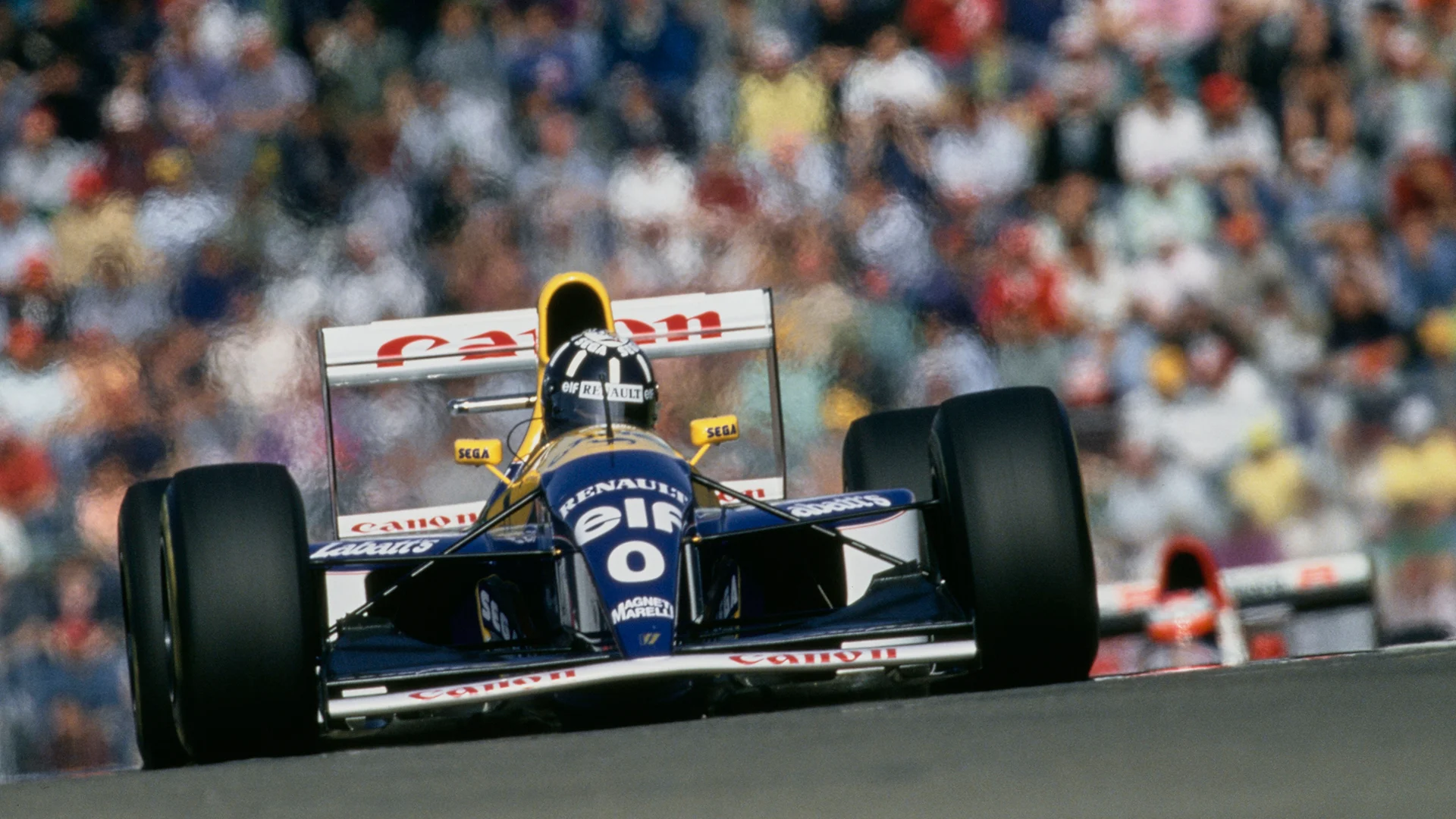
1994 Williams-Renault FW16
Newey admitted on the Beyond The Grid podcast that “I completely messed up the aerodynamics of going back to passive suspension” with the FW16. Yet big changes allowed this car to win the constructors’ championship.
It was an evolution of the 1993 Williams, but had to work through a wider ride height range thanks to gizmos being outlawed such as active suspension, which held the car in a tight window. The FW16 was therefore tricky to drive early on.
At the French Grand Prix, shorter sidepods were introduced, along with a new floor and revised bodywork that solved stalling troubles. This problem originated with airflow separation at the front of the original-specification sidepods, but crucially led to the diffuser stalling.
The FW16B followed at Hockenheim, partly in response to in-season safety rule changes, featuring even shorter sidepods and a curtailed diffuser, albeit one that made the central part of the underfloor work harder.
The FW16 also pioneered the aerodynamic profiling of suspension parts with the upper wishbone leg lowered and packaged with the driveshaft in the same shroud.
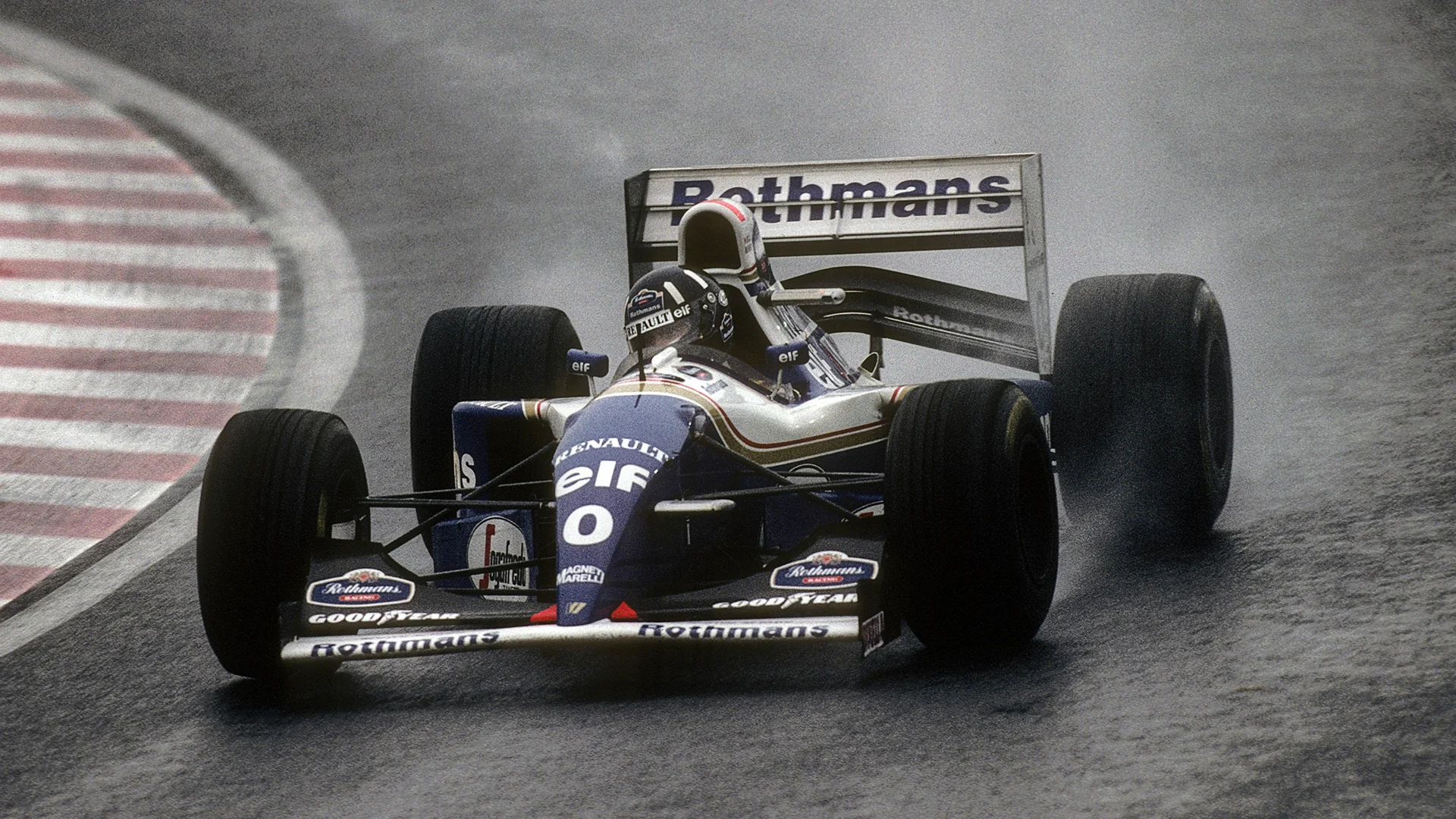
1996 Williams-Renault FW18
The Williams FW18 was an evolution of its race-winning predecessor, the FW17, and pioneered a design trend that continues today.
Driver Damon Hill’s height meant that he struggled to fit comfortably into the cockpit. But Newey realised that by making the driver more reclined by situating the pedals higher and their head lower, this problem could be tackled. This had some knock-on effects on the packaging of the front suspension, but was a net gain and set the template for driver positioning that prevails to this day.
FULL TRANSCRIPT: Read every word from F1 design guru Adrian Newey’s Beyond The Grid interview
Newey also came up with a novel interpretation of the new raised cockpit side regulations, introduced for safety reasons. This demanded the cockpit sides were 75mm higher. But Newey recognised the regulations governing the headrests covered only their area and not the height. Therefore, the Williams FW18 featured narrow extensions of the chassis on each side of the driver’s head, rather than the chunky designs used by most rivals.
The car also represented a big step forward in downforce compared to its predecessor, with shortened sidepods, bigger bargeboards to manage the front-wheel wake better, and increased rake that improved the downforce potential.
1997 Williams-Renault FW19
Newey left Williams on November 7 1996, but the 1997 Williams FW19 has to be regarded as his car given it was an evolution of the FW18 and that he firmly set the design direction before stepping aside.
The most significant changes were to the rear end thanks to the introduction of the new Renault RS9 engine, which had a V-angle widened to 71 degrees from the 67 degrees of the previous run of Renault V10s. This offered a significant height and centre of gravity gain, as well as reduced weight, and allowed the introduction of a more tightly-packaged gearbox. This created aerodynamic opportunity at the rear of the car.
The car also featured a modified design around the airbox, inspired by the engine air intake of a propeller plane Newey spotted while on holiday in the Caribbean, to minimise the aerodynamic disruption both to the airbox intake and the airflow to the rear wing. This was achieved by raising the air intake, with a small cut-out below separating it from the headrest area.
While Newey wasn’t there to oversee its in-season development, Jacques Villeneuve spearheaded the securing of another World Championship double in a car that was fast but could be tricky to drive, potentially as a result of the high-rake concept.
1998 McLaren-Mercedes MP4/13
Designed in double-quick time after Newey started work as McLaren Technical Director in August ’97, the McLaren-Mercedes MP4/13 aced the new 'narrow track and grooved tyres' regulations set.
One of the key design decisions was to opt for a long wheelbase, partly for the aerodynamic opportunity that presented and partly in pursuit of similar diagonal stability characteristics to the previous generation of cars – the way the inside front and outside rear tyre are loaded at corner entry. That was a trend rivals quickly followed.
The introduction of the grooved tyres meant Newey prioritised stability with this car, partly through a low centre of gravity and partly achieved by a lowline chassis.
Famously, the ‘brake steer’ system introduced in ’97 was banned early in the year. This was an extra brake pedal that permitted the drivers to apply the brakes to one of the rear wheels, which conferred a significant lap time gain worth half-a-second and perhaps even more depending on the track configuration.
In ’98, this evolved to allow the drivers to select which rear wheel the brake operated using a switch, whereas the previous season it was fixed to one side or the other. Had that not been banned, the car might have been even more dominant in the hands of Mika Hakkinen and David Coulthard.
2010 Red Bull-Renault RB6
While the Brawn team stole the headlines in 2009, the Red Bull RB5 of that season was fundamentally the best-conceived concept for the dramatically different aerodynamic regulations introduced that year. It just lacked the controversial double diffuser at the start of the season. The 2010 car was a natural evolution.
To optimise the potential of the double diffuser, the length of the car at the rear was maximised. That was partly thanks to modified rear suspension geometry that featured an extreme angle for the front leg of the rear lower wishbone. Combined with the narrow gearbox, this contributed to a huge performance potential in terms of the rear aero, which was augmented by the introduction of exhaust-blowing into the side of the diffuser.
READ MORE: From DAS to the double diffuser – 5 F1 innovations that caught rival teams napping
There was also added rake, a design trend that characterised Red Bull’s cars throughout this era. Beyond that, it was simply a case of optimising the RB5 concept with a more extreme V-shape of the chassis.
Red Bull also confounded rivals with the ability to run low in qualifying, particularly benefitting the front wing, yet not suffer with bottoming out once on a full fuel load. There were accusations of flexible bodywork trickery, although the car passed even the more stringent load tests that were introduced – with one of the other reasons this was possible the introduction of FRIC (front-rear interconnected suspension).
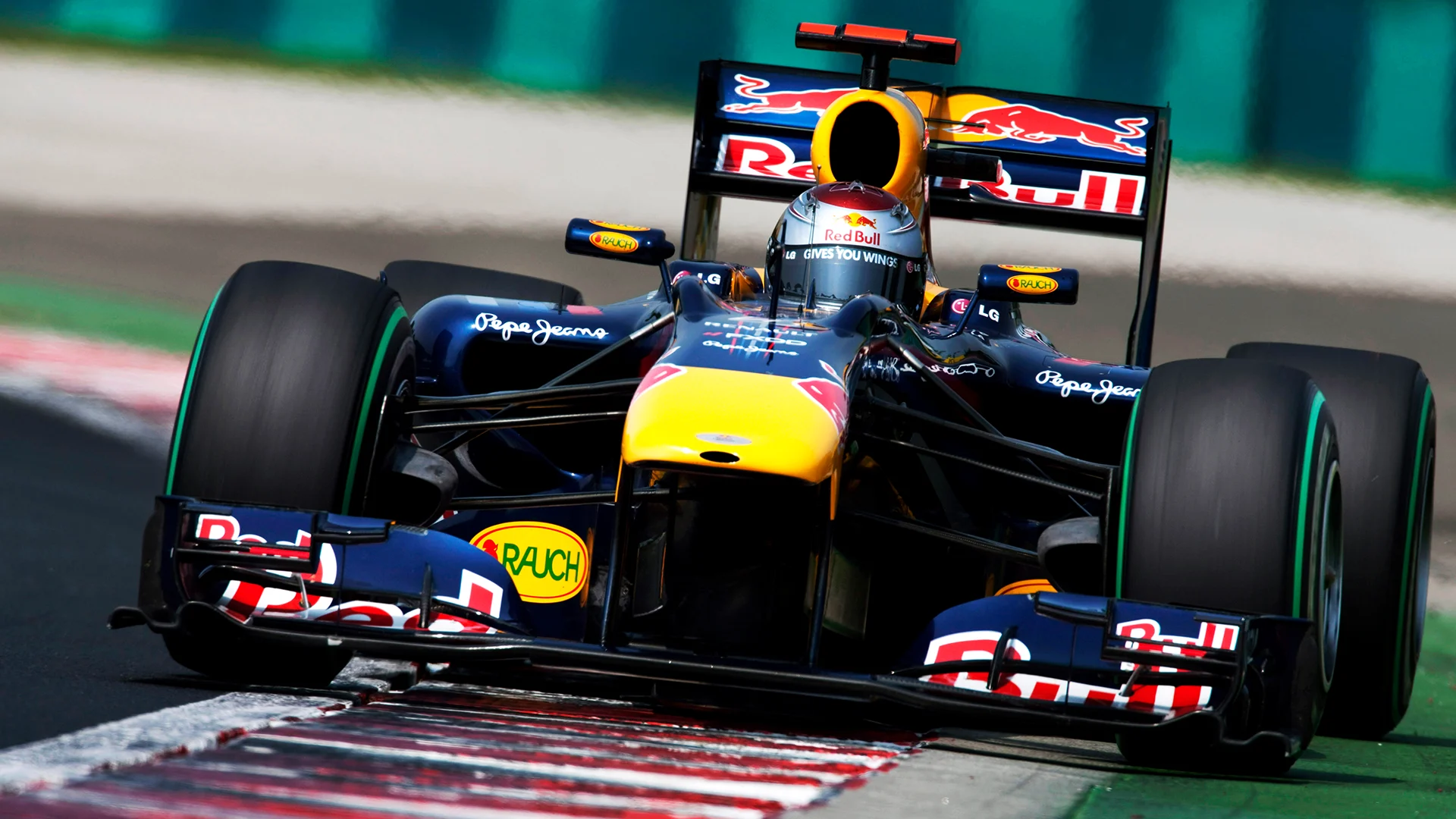
2011 Red Bull-Renault RB7
The Red Bull RB7 of 2011 was arguably the greatest of the dominant Red Bulls in this era. That’s because it harnessed the full-potential of exhaust-blown downforce and several other key design concepts.
Newey described the exhaust design used in testing as a “vanilla” version. Then, towards the end of pre-season testing a new version was deployed with the exhausts exiting low just inside the rear tyres. This was combined with the ability to deploy both ‘cold’ and ‘hot’ blowing, the latter whereby the engine ignition was retarded to create exhaust gas flow when off throttle. This allowed huge gains in rear stability under braking and on corner entry in particular.
TECH TUESDAY: Is this the small design detail behind Red Bull’s massive advantage in 2023?
The car also ran increased rake compared to the year before and took another step forward with the platform control achievable and running the car low.
The return of KERS also allowed Newey to come up with the idea of packaging the batteries inside the gearbox bellhousing, rather than under the fuel cell. This meant a sacrifice of around 40% of the energy, and often led to it overheating and not being used for a large part of races, but it was vital for a qualifying lap, a good start and in key phases of the race.
The packaging also allowed the fuel cell to be lower and the engine to be positioned a little further forward, which was an advantage in terms of the bodywork.
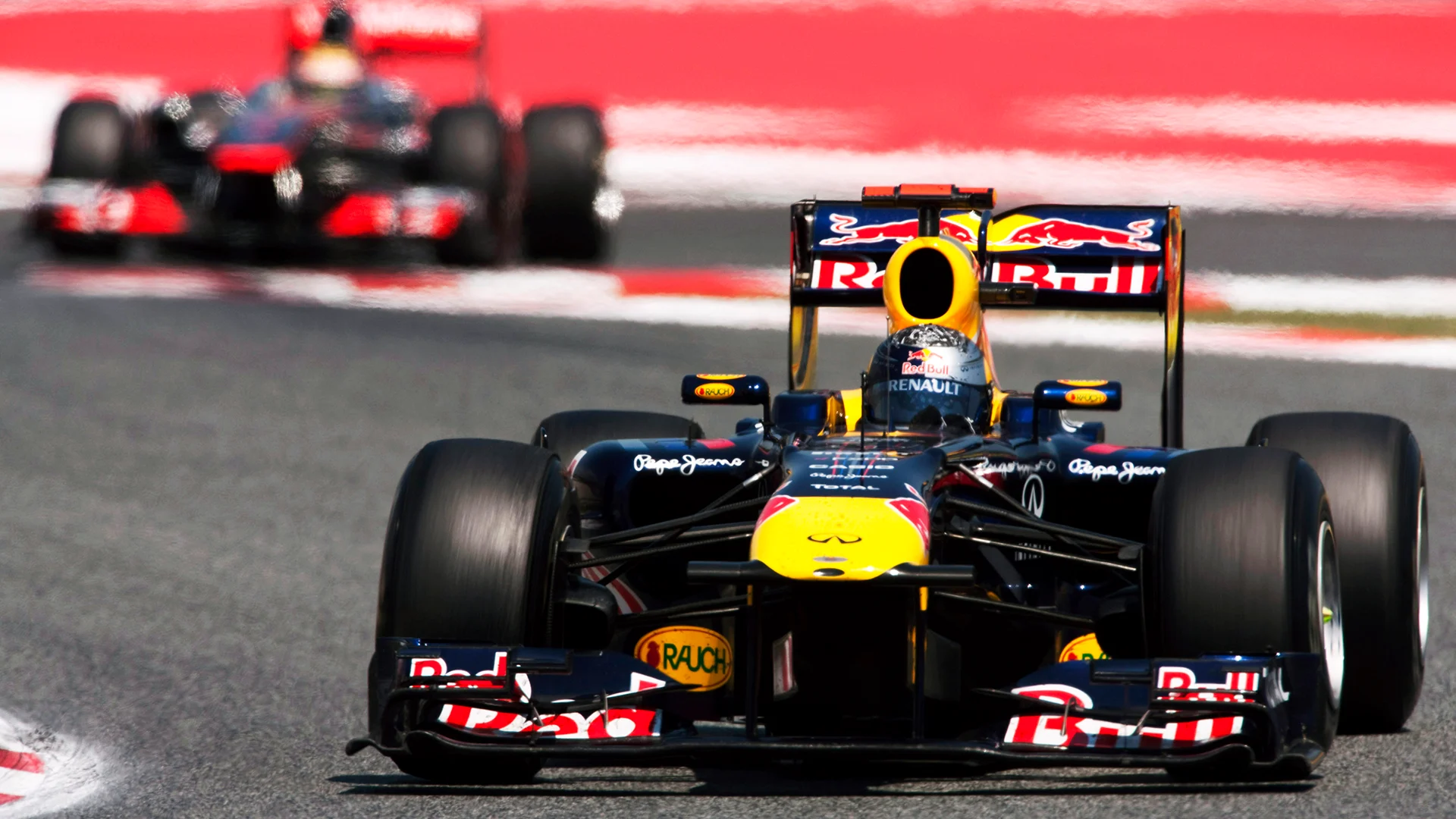
2012 Red Bull-Renault RB8
With the regulations for 2012 modified to mandate the exhaust exits must be located 330mm behind the rear-wheel centreline and the double-diffuser banned, that meant significant changes for Red Bull.
The original concept, which used ducting to capture and redirect exhaust gases, was not considered legal, so Red Bull re-optimsed the exhaust using the Coanda effect, whereby gas flow tends to attach to surfaces.
WATCH: F1 explained – What is the Coanda effect?
Red Bull introduced its Coanda-effect exhaust late in pre-season testing. This featured inlet tunnels directing airflow from the base of the sidepods to just forward of the diffuser.
However, it took time for this concept to be made to work and it wasn’t until the European Grand Prix at Valencia in late June that this was fully up and running thanks to the introduction of modified rear bodywork. The gas flow out of the exhausts helped to pull the airflow across the top of the sidepods that was channelled to the diffuser sides, distinct from that taken from the bottom of the sidepods.
It took time to optimise the car, which was also boosted by a more reliable version of the 2011 KERS concept, but by the closing stages of the season it worked well enough to allow Sebastian Vettel in particular to use the throttle to counteract oversteer by creating rear downforce.
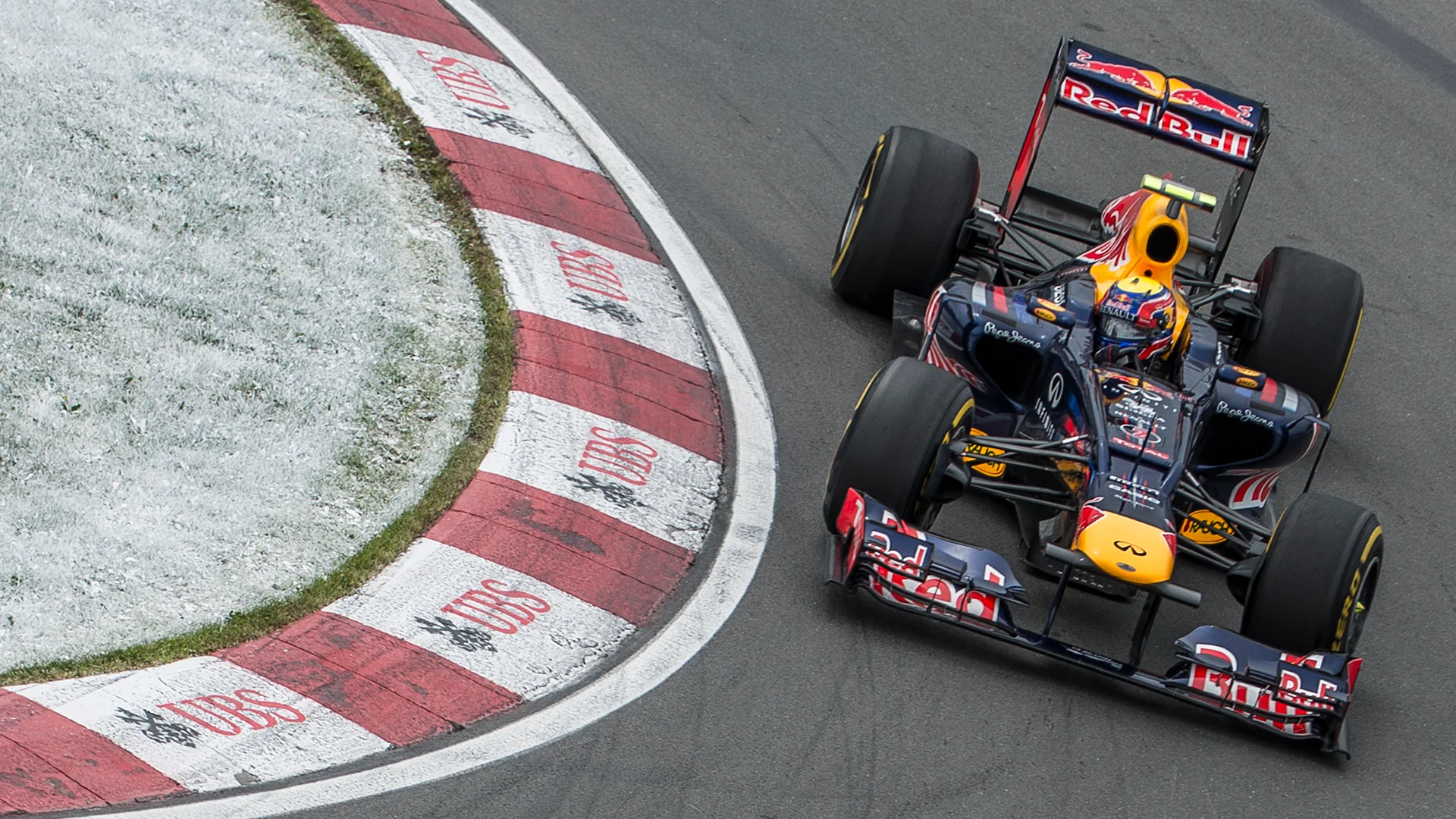
2013 Red Bull-Renault RB9
The 2013 Red Bull was the final iteration of the concept first introduced in 2009 and won 13 out of 19 races, including a then-record nine-in-a-row.
All of the familiar traits were there, a high-rake car that produced prodigious underfloor downforce while avoiding bottoming out or diffuser stalls, a Coanda effect exhaust that directed the gas flow to the downforce-producing brake ducts and diffuser sides, the use of the sidepod undercut to act as a duct and remarkable control of vorticity at the rear that was key to making the rear aerodynamics work.
As Newey said, “all the architecture of the car was the same [as the RB8] with various aerodynamic tidy-ups and evolutions”. So effective was the concept that there were occasions when Red Bull could even sacrifice a little downforce and therefore lap time in order to improve the car’s straight-line speed and make it more raceable.
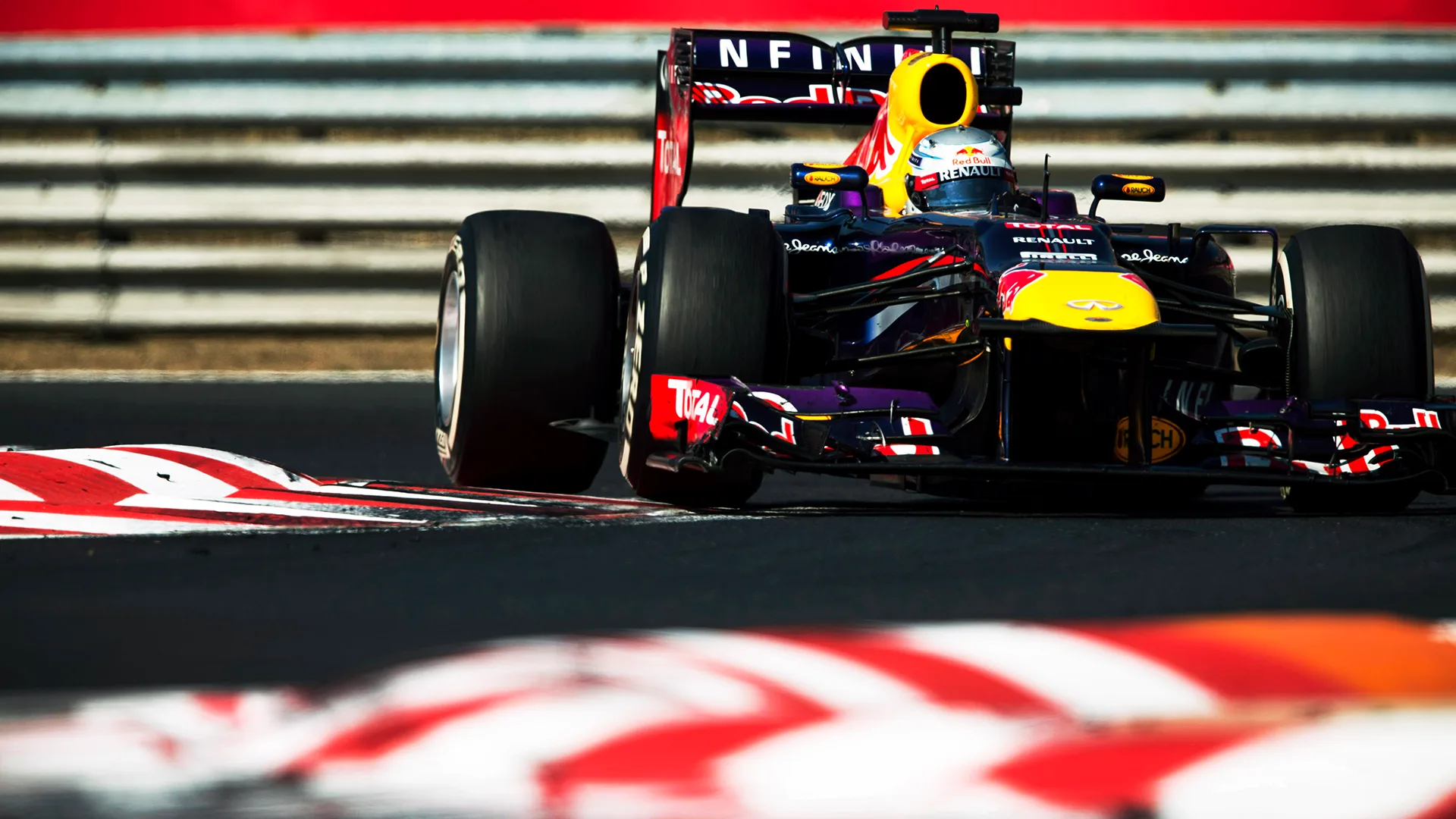
2022 Red Bull-RBPT RB18
With F1’s chassis technical regulations undergoing the biggest change in history for 2022, it was no surprise Newey’s Red Bull team produced the best car.
Newey had experience of F1’s last ground effect era with the Fittipaldi team that first employed him, and during his time in IndyCar. He understood the relationship between the aerodynamics of the car and the mechanical platform were critical, which is why he focused on design work on the front and rear suspension. This led to a car that had sufficient rear suspension travel for the required stability of the aero platform, but without inducing the bouncing problems that blighted others.
It took time to optimise the car, primarily by reducing the weight overall and also pushing the weight distribution further rearward to reduce the understeer. While Ferrari had a strong car over a single lap, increasingly the Red Bull was dominant on race day, aided by the fact it had prodigious straight-line speed considering its downforce level.
In short, it was a car that worked well across a range of corner-speed profiles and ride heights while containing the porpoising troubles that, notably, ruined the season for Mercedes.
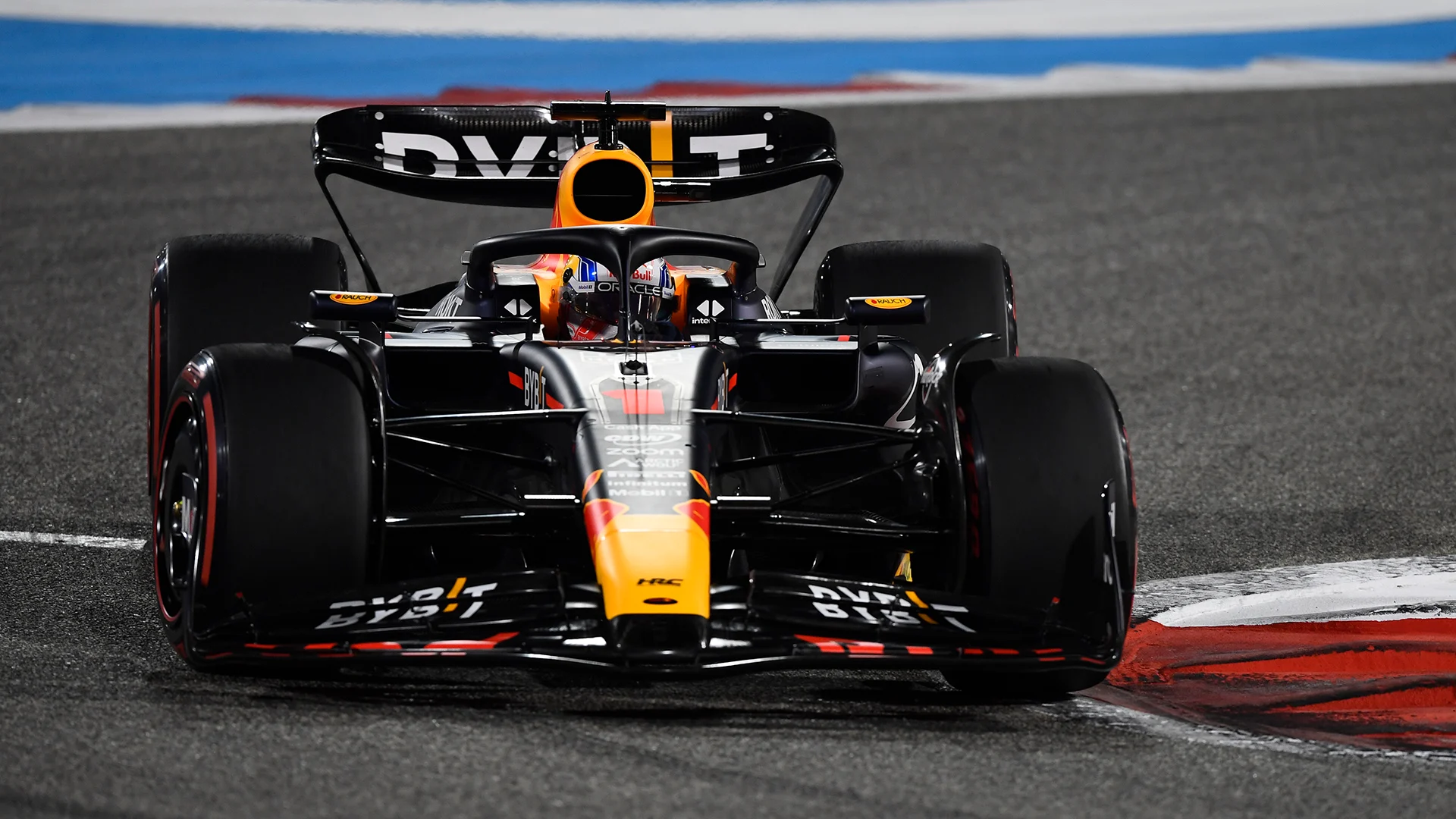
2023 Red Bull-Honda RBPT RB19
The latest Red Bull is a ruthless evolution of last year’s car and has proved to be close-to unbeatable. Its only defeat came in Singapore, the consequence of set-up troubles and a track configuration that played to the car’s weaknesses.
Much was made of the elaborate underfloor design that was glimpsed after Sergio Perez’s Monaco qualifying crash. What caught the eye was the ‘topography’ of the ceiling of the floor, which is all about creating a powerful but more benign floor not prone to the stalling that triggers porpoising.
REACTION: How social media responded to Red Bull’s constructors’ title win
Added to that, the Red Bull has remarkable platform control, the result of significant anti-dive on the front and anti-squat on the rear suspension. Just as with Newey’s active cars of the past, this allows the mechanical platform to be held closer to the optimum across a wide range of corner types.
As Technical Director Pierre Wache said earlier this season, the car’s key strength is “efficiency”, allowing it to be quick on the straights and produce significant downforce. That’s added to a very effective DRS that points to the fact the aero is conceived in a way that can cut the drag at high speed, not through any kind of magical trickery but simply by ensuring the floor, beam wing and rear wing interact in an advantageous way.
Next Up
Related Articles
 F1, the FIA and 11 teams sign 2026 Concorde Agreement
F1, the FIA and 11 teams sign 2026 Concorde Agreement Hamilton 'doesn't have a mindset' for 2026 after tricky year
Hamilton 'doesn't have a mindset' for 2026 after tricky year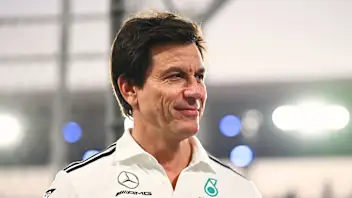 Wolff calls Abu Dhabi ‘mediocre’ but ‘pleased’ to finish P2
Wolff calls Abu Dhabi ‘mediocre’ but ‘pleased’ to finish P2 Tsunoda's best moments in F1 as he departs the grid
Tsunoda's best moments in F1 as he departs the grid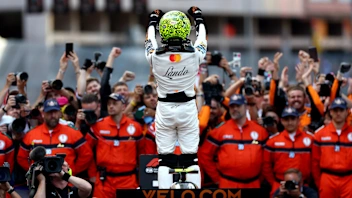 PalmerThe 6 defining moments of Norris’ title-winning season
PalmerThe 6 defining moments of Norris’ title-winning season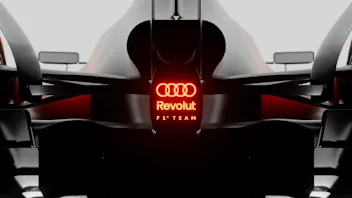 Audi announce team name and global launch date for 2026 challenger
Audi announce team name and global launch date for 2026 challenger
